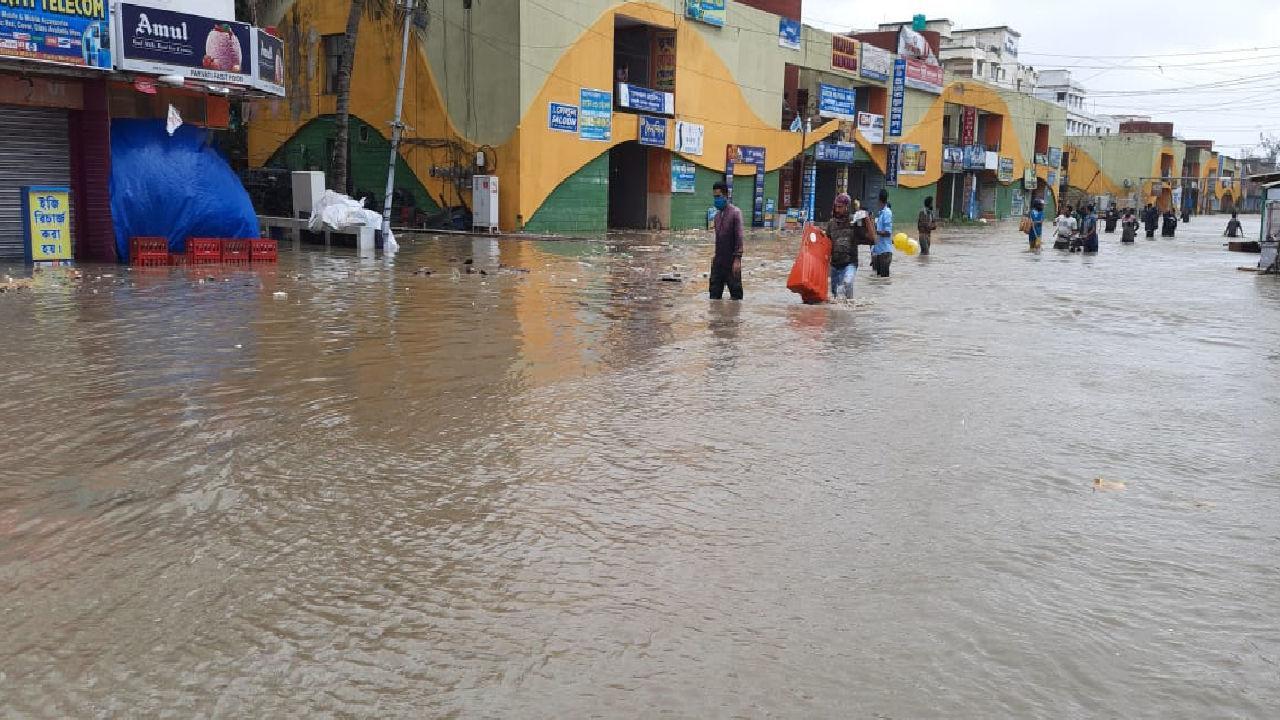On the back of recent cyclone, Yaas hitting the eastern coast, Council on Energy, Environment and Water (CEEW) has done an independent analysis in West Bengal and Odisha.

Flooded Digha city in West Bengal as a result of cyclone Yaas. Pic/Pallav Paliwal
More than 75 percent of Indian districts are hotspots for extreme climate events. On the east coast, more than 90 per cent of districts are hotspots for cyclones, floods, droughts and their associated events; these districts are home to over 250 million people. On the back of recent cyclone, Yaas hitting the eastern coast, Council on Energy, Environment and Water (CEEW) has done an independent analysis in West Bengal and Odisha.
According to a CEEW study, after 2005, the yearly average of the number of districts in India affected by cyclones tripled and the cyclone frequency doubled. In the last decade alone, 258 districts were affected. The cyclone hotspot districts are primarily concentrated along the eastern coast. These include Baleswar, East Godavari, Howrah, Kendrapara, Nellore, North 24 Parganas, Paschim Medinipur, Puri, Sivaganga, Tuticorin, and West Godavari.
Also read: Cyclone Yaas: NDRF earmarks highest-ever number of teams for Odisha, West Bengal
In east coast districts, the frequency of cyclones and storm surges has increased seven-fold in the last 50 years. Since 2005, the number of districts affected has increased five-fold on a decadal basis. As per the study, on the east coast, there has been a 20-fold increase in associated cyclone events such as storm surges, heavy rainfall, floods, and thunderstorms. Further, while east coast cyclones once tended to occur more frequently in the post-monsoon season compared with the pre-monsoon season, there has been a reversal in this pattern in the last decade.
More than half of the cyclone hotspot districts on the east coast are witnessing drought or drought-like conditions. The east coast's warming regional microclimate - driven by factors like land use change and the deterioration of natural ecosystems - has led to intensified cyclonic activity in the Bay of Bengal in both the pre-monsoon and post-monsoon seasons. The study said flood frequency has increased fifteen-fold in east coast states. The number of districts affected has increased thirteen times, exposing more than 81 million people. Flood hotspots on the east coast include Bankura, Chennai, Cuttack, East Godavari, Jagatsinghpur, and Visakhapatnam.
While the east coast has traditionally been more prone to cyclones and floods, droughts have increased seven-fold in recent decades. Drought hotspots in east coast states include Anantapur, Angul, Baleswar, Bankura, Coimbatore, Kanchipuram, Kandhamal, Madurai, Nalgonda, Prakasam, Purulia, Sundargarh, and Tirupur.
This story has been sourced from a third party syndicated feed, agencies. Mid-day accepts no responsibility or liability for its dependability, trustworthiness, reliability and data of the text. Mid-day management/mid-day.com reserves the sole right to alter, delete or remove (without notice) the content in its absolute discretion for any reason whatsoever
 Subscribe today by clicking the link and stay updated with the latest news!" Click here!
Subscribe today by clicking the link and stay updated with the latest news!" Click here!









